
Discover the Monkey Trail
The Golden Monkey Trail in Rwanda is one of the most captivating wildlife experiences in Volcanoes National Park, offering a rare chance to observe one of Africa’s most endangered and charismatic primates—the golden monkey. Native only to the Virunga Mountains, these monkeys are known for their vibrant golden-orange coats, expressive faces, and incredibly playful nature.
The trek begins in the early morning with a guided hike through dense bamboo forests and lush undergrowth, located on the lower slopes of the volcanoes. The total experience usually lasts around 2 to 4 hours, depending on the location of the monkey groups that day. The trail itself is considered moderate, making it accessible for a wide range of visitors, including families and those looking for a lighter alternative to the more strenuous gorilla treks.
One of the highlights of the Golden Monkey Trail is how close you can get to the monkeys—often within just a few meters. These habituated groups are accustomed to human presence, allowing for excellent photography and unforgettable up-close viewing as they swing through trees, dash across the forest floor, and interact with one another in dynamic social groups.
In addition to the golden monkeys, the trail offers the chance to see a variety of other wildlife. Keep an eye out for black-and-white colobus monkeys, bushbucks, and a remarkable range of bird species, such as Rwenzori turacos and sunbirds. The forest itself is alive with butterflies, insects, and the sounds of nature, creating a fully immersive experience.
Set against the stunning backdrop of mist-covered volcanoes and ancient highland forest, the Golden Monkey Trail is not just a wildlife encounter—it’s a peaceful journey into one of Rwanda’s richest ecosystems. By participating in this trek, you also help support sustainable tourism and the protection of these unique animals and their fragile habitat.
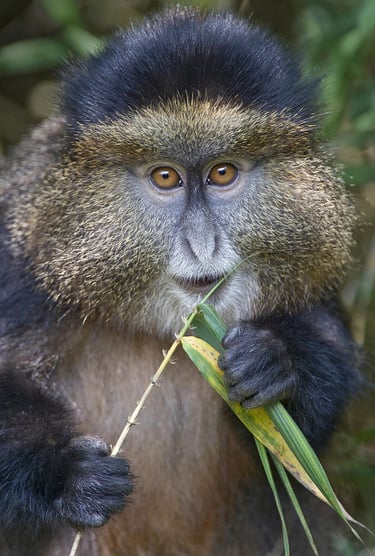
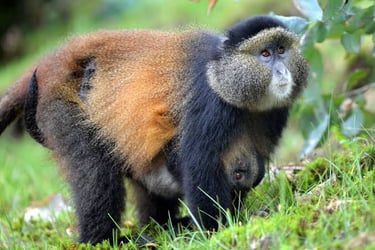
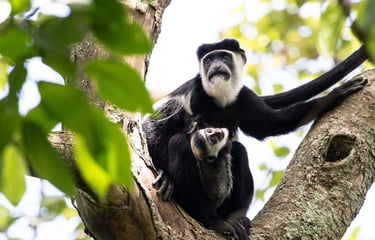
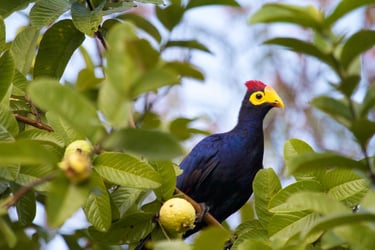
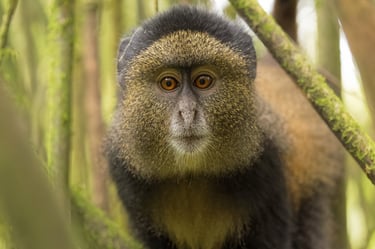
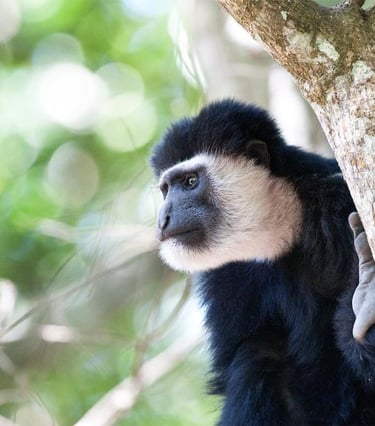

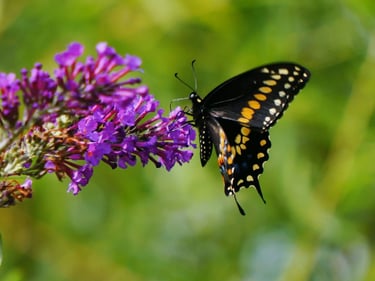








Frequently asked questions
Do I need to get a trekking permit?
Yes, you need a trekking permit for the Golden Monkey Trail. It can be obtained through the Rwanda Development Board (RDB) or licensed tour operators. Contact us and we can assist.
How long is the trek?
The trek typically lasts 2 to 4 hours in total, including the hike to and from the monkeys. The time may vary depending on their location that day, but the actual viewing time with the golden monkeys is limited to 1 hour.
What does the permit include?
The Golden Monkey trekking permit includes a guided trek with a professional ranger, park entrance fees, and one hour of observation with the golden monkeys in their natural habitat. The permit also contributes directly to conservation efforts in Volcanoes National Park.
How long do I get to observe the monkeys?
You get to observe the golden monkeys for 1 hour once you reach them. This time is strictly regulated to minimize stress on the animals and ensure responsible wildlife viewing.
What does the permit not include?
The permit does not include transportation to the Gorilla Trekking Center. You will need to get transportation from the hotel to the Center. Tiloreza, at an additional cost, can arrange transportation in a comfortable four wheel drive vehicle.
How close do I get to the monkeys?
You can get as close as a few meters to the golden monkeys during the trek. Since they are habituated to human presence, they often come quite near without fear, allowing for amazing views and photo opportunities. Their playful behavior and curiosity make the experience especially engaging and memorable.
Are there any COVID testing requirements? Why?
As of now, there are no COVID-19 testing requirements specifically for the Golden Monkey Trek. However, travelers should check the latest entry requirements for Rwanda, as these can change. It's also recommended to follow basic health guidelines, such as hand hygiene and staying home if feeling unwell, to protect both visitors and wildlife.
Will I see monkeys?
Yes, sightings of golden monkeys are guaranteed, as the groups are habituated and regularly monitored by park rangers. During the trek, you’ll also have the chance to see other wildlife such as colobus monkeys, bushbucks, various bird species, and colorful butterflies—making it a rich and immersive nature experience.


